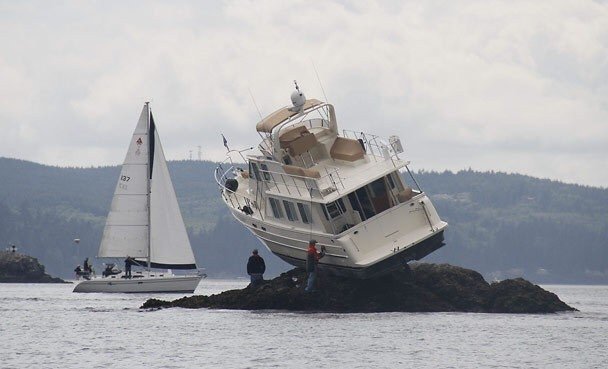I have thought about this quite a bit in an attempt to rationalize choices I have made. My conclusion is that these are unanswerable questions in light of the dearth of objective evidence available. The advance conclusion for the diatribe that follows is that all boats are poison in regard to your questions, pick your poison and you will do fine with it.
Regarding durability (one of my main reasons for driving steel): Too early to tell is my conclusion though I think there will be a reveal on this question coming over the near term. FRP is a relatively new technology in the history of boat building and there was rapid evolution between solid and cored as well as types of core technology as FRP emerged as a material for boat building. There is a pretty massive number of early FRP boat builds that are turning 30 to 40 years old and we are about to find out if we can sustain their most common points of failure which are related to water intrusion of hull, deck, and house. I am only qualified or interested in buying older boats since I prefer real build quality and the combination of build quality and recent vintage is beyond my tolerance for financial indiscretion. I believe this approach to asset acquisition often leads to valuation after 50 years equal to or greater than valuation at purchase given diligent care. Selection of classic quality of design/material and prideful/expert workmanship is a well proven ownership methodology I think. I like nice stuff and do not care if it is old. Durability is at the top of my list among your questions
During both of my buying experiences over the last decade I surveyed both FRP and steel boats. I experienced survey failures with vaunted brands of FRP boats to include Krogen, Defever, and Californian due to intrusion issues that I was not willing to face. That was not the case with steel. Steel has different issues that I am willing to face and that will vary from individual to individual depending upon prejudice. People always refer to the liability of corrosion in steel. Relentless, uncompromising selection and application of coatings and electrical protection preclude corrosion so your have your choice of spending lots of money and energy to avoid corrosion or same to address corrosion. The former is my choice.
Maintenance: certainly no expert here, but again we are relegated to mostly opinion as there is not a high integrity data pool relating to this question.... so lore is our basis. My assessment is that steel is expensive on a consistent basis to maintain and that FRP gives you some peace early and then failures get really expensive. Over forty years I expect there is not material variation. But, if you are buying thirty year old FRP that has not yet crossed this bridge, perhaps you should consider keeping a very big checkbook handy. It is my view that if I had purchased the 30 year old Krogen that I had a failed survey with, I would have spent an amount equal to the purchase price to deal with intrusion at hull, deck, and house. Not saying that would not be reasonable in terms of value, just not my cup of tea. I like boating better than projects. Some are reverse of that and I really respect them.
Cruising comfort: Probably more related to hull shape than hull material? Any material can be insulated whether inside the sandwich or inside of the hull. I experienced interest dampness which I do not like in most of the FRP boats I looked at but not in the two steel boats that I own. I doubt that was related to build material but more related to insulation, climate type, and heating/cooling need and method. I live in damp cool climate and heat by combustion which is a drying force. In terms of interior sound, I do not own a decibel meter but my boats are quiet.
I have owned and operated metal and FRP watercraft for 40 years and prefer steel. Another individual with the exact same experience could reasonably prefer FRP.
Thus my view that this is not answerable, which view would result in the advice to buy the boat that lights your fire on other issues and not agonize much over this one.


